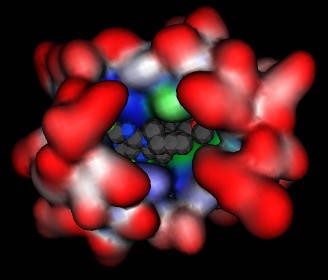
Hsp90 Activity Inhibitors
A recent trend in cancer therapy has been to develop agents that “target” a single molecular alteration. However, most tumors or other transformations (i.e. neurodegeneration) are characterized by multiple growth regulatory alterations and these are transformation specific. Thus drugs targeting one abnormality may be insufficient in reversing transformation and would be limited to use in a small subset of cancers or transformations. It has been suggested that one potential way to circumvent this problem is to target the machinery that allows most transformed cells to function with the burden of abnormalities they carry: the chaperone Hsp90. Hsp90 is required for the ATP-dependent refolding of denatured or ’unfolded’ proteins and for the conformational maturation of a subset of proteins involved in the response of cells to extracellular signals. Activation of signaling pathways mediated by these Hsp90 clients is necessary for cell proliferation, regulation of cell cycle progression and apoptosis. Additionally, gain-of-function mutations responsible for transformation often require Hsp90 for maintenance of their folded, functionally active conformations.
Inactivators Of Hsp90 Function
Direct binders to the N-terminal ATP/ADP pocket of Hsp90 inhibit Hsp90 ATPase activity. The ATP-regulatory pocket of Hsp90 is unique. While bound to Hsp90 the nucleotide adopts a bent shape found only in ATPases belonging to the GHKL family (G = DNA gyrase subunit B, H = Hsp90, K = histidine kinases and L = MutL). These enzymes share the same left-handed â-á-â fold, called the Bergerat fold. This fold is not observed in the high affinity binding sites of kinases (which adopt a P-loop motif) or in other chaperones such as Hsp70 (which adopts an actin fold). These observations suggest that it is possible to discover compounds of high selectivity for Hsp90 by identifying those that specifically bind to Hsp90 via the N-terminal ATPase pocket.
